

Digital scans of each of the 32 sheets were made available by the New York Public Library at a resolution of 300dpi.
As with any document over 200 years old, the pages were not perfectly rectangular and the map portion of each scan not only was not rectangular,
but the edges were not straight lines. For each scan, a geographic rectangle was created in ArcPro such that at least two of the map corners
matched a rectangle corner. In most cases, because of the maps being skewed, only two corners were able to be fitted.
Each corner of the map was then georeferenced to a corner of the rectangle using a projective transformation. This assured that the edges would
align vertically and horizontally, ie., that the top-left and top-right corners were at the same level or the top-right and bottom-right corners
were directly aligned vertically, etc.
This would be enough to mosaic all the images so that the corners matched but, prior to doing that, the images were further corrected to
"rubbersheet" them fully to the rectangle, ie, so the corners and the edges matched. Rubbersheeting is a process by which an images is
distorted by stretching (inward and outward) small portions to straighten them and to align the map border with the rectangle (see image pair below).
When the process was finished each edge formed a near-straight line.
As many as 100 points were used per sheet to align the image to as true a rectangle as possible. This was an iterative process where the first set of
adjustments were made to straighten most of the image. The image was then exported and a cropping rectangle overlain on the edges. Areas of each
edge were identified where adjustments were still necessary and those areas were then corrected and the image exported again and examined. This
process continued until the image was deemed fully aligned. This set of steps took an average of an hour per sheet.
Original Image Rubbersheeted Image
The process of aligning and rubbersheeting started with image D2 from the grid below and each subsequent image was appended to it using
ImageMagick image editing software.
The third sheet added was D3 and, using the same steps as above, the top edge was aligned to the bottom edge of D2. Starting with sheet E3, this
process doubled since the alignment of two edges now had to be verified. Once this central section of four sheets had been compiled, the full
map was successively built outward around this core set of images. The finished result was a 3.521gb TIFF image with dimensions of 47999x26240 pixels
(1,259.5 megapixels).
Once the seamed image had been created, the TIFF was reloaded as an image layer into ArcPro and the process was started to identify features on the map
that were still in existence in modern-day London. A spline transformation was again used to georectify the image, that is, to give it a coordinate
system so that it could be overlain on a map.
There are many points that have lasted through time and could be used to reference the map. Some of these were the turrets of the London Wall near
St. Giles Cripplegate, the Statue of Queen Anne in front of St. Paul's Cathedral, the Statue of Charles I at Charing Cross, etc. Unfortunately,
many areas have no resemblance to the past, having been forever changed in the Blitz. Ironically, the Blitz and air photos taken by the Royal
Air Force in the days, weeks, months, and even years after served as a guide to referencing the old maps, especially in the area of Old London.
The devastation of the bombing leveled major parts of the city, leaving only a grid of streets and some foundations visible. Incredibly, a great
number of these streets had remained mostly unchanged in shape through the centuries. A second effort was begun to georeference some of the 1940s RAF
photos. This was a much easier process since they were actual photographs and far less numbers of points were required to reference them to the
real world. Once this was completed, the scanned paper maps of Ogilby, Rocque, and Horwood could be referenced in areas where absolutely no landmarks
survived. These were areas such as the Barbican, the area south and east of St. Paul's, immediately west of The Tower, and many other places.
A Geoserver was then set up and tiles at various resolutions were created from the large image. This allowed high-quality overlay images to
be served through an Openlayers server permitting the user to view the current city of London and then view the 220-year old map on top of it.
About the Map
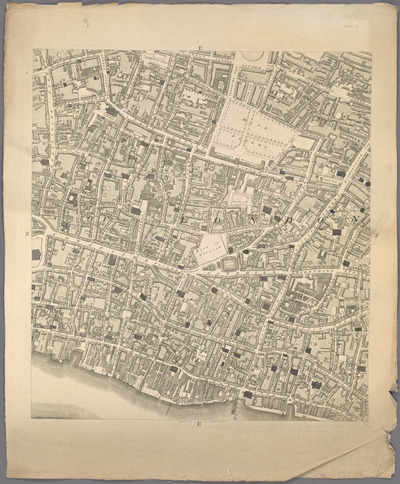

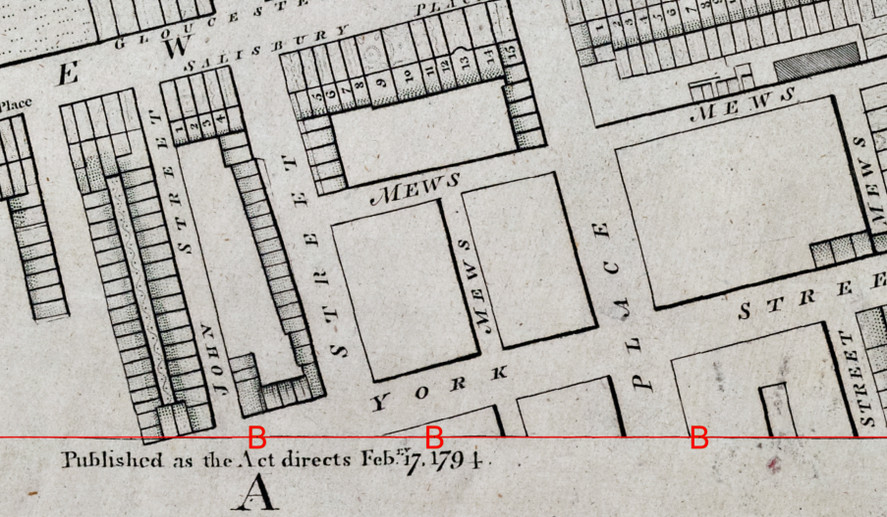
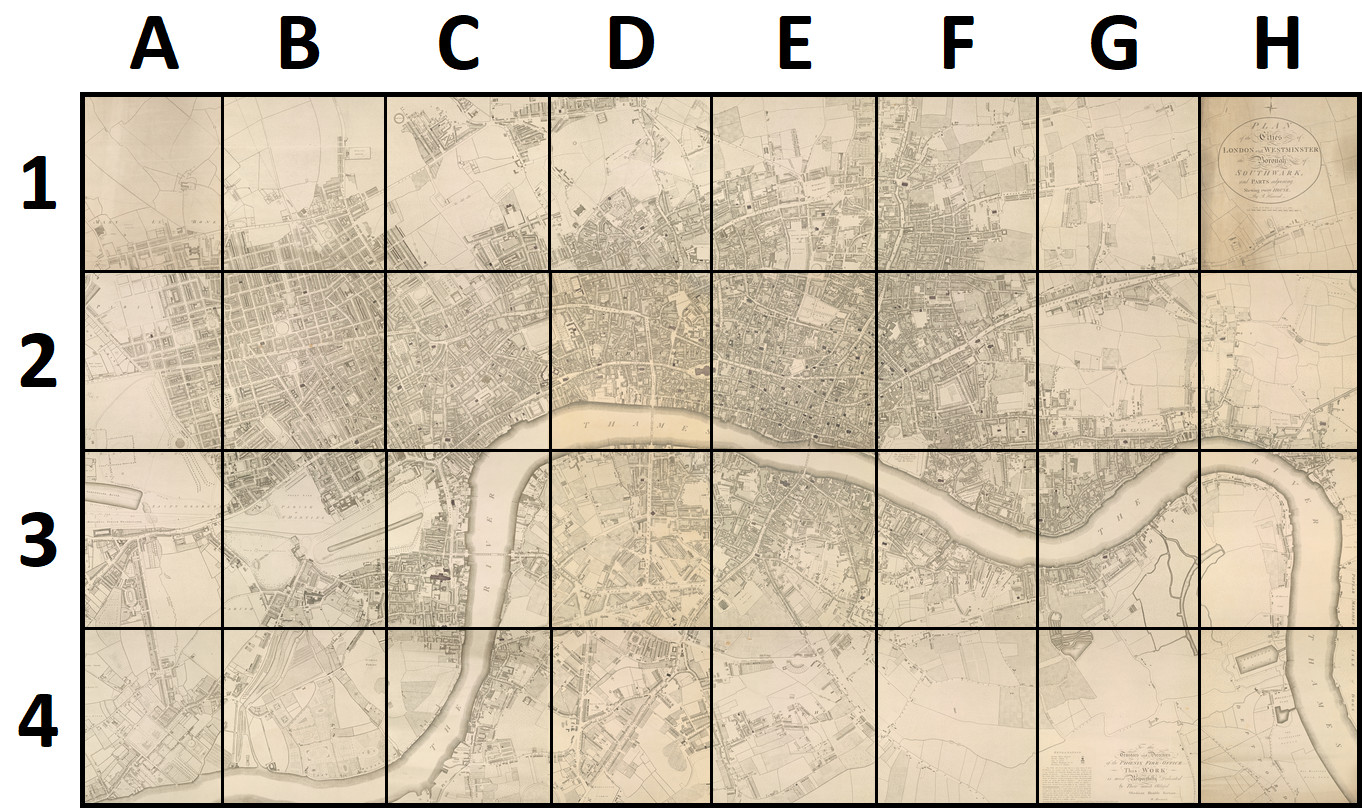
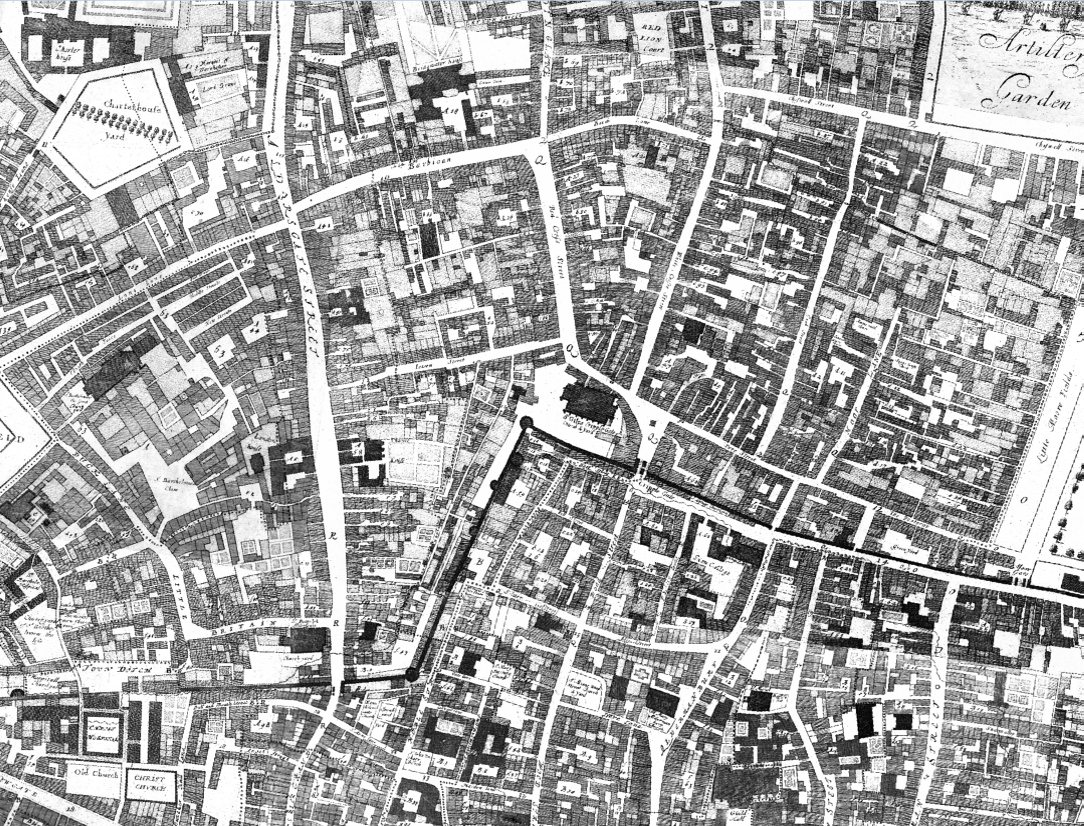
Ogilby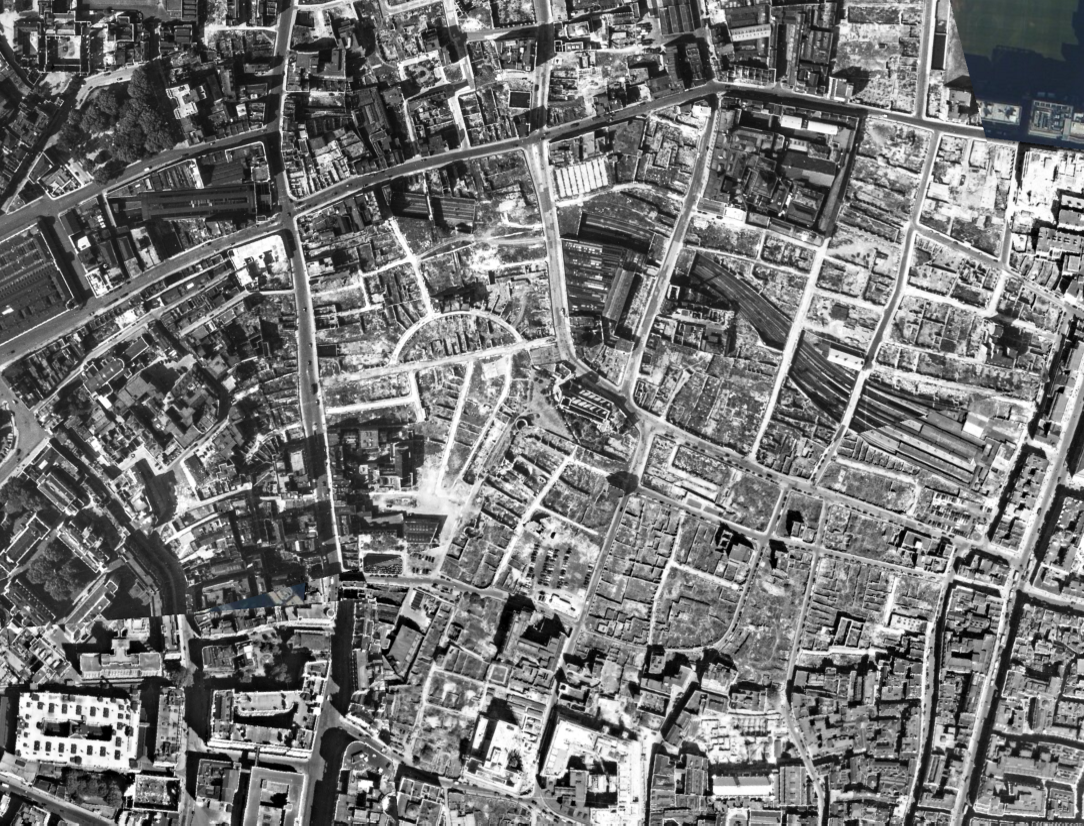
Royal Air Force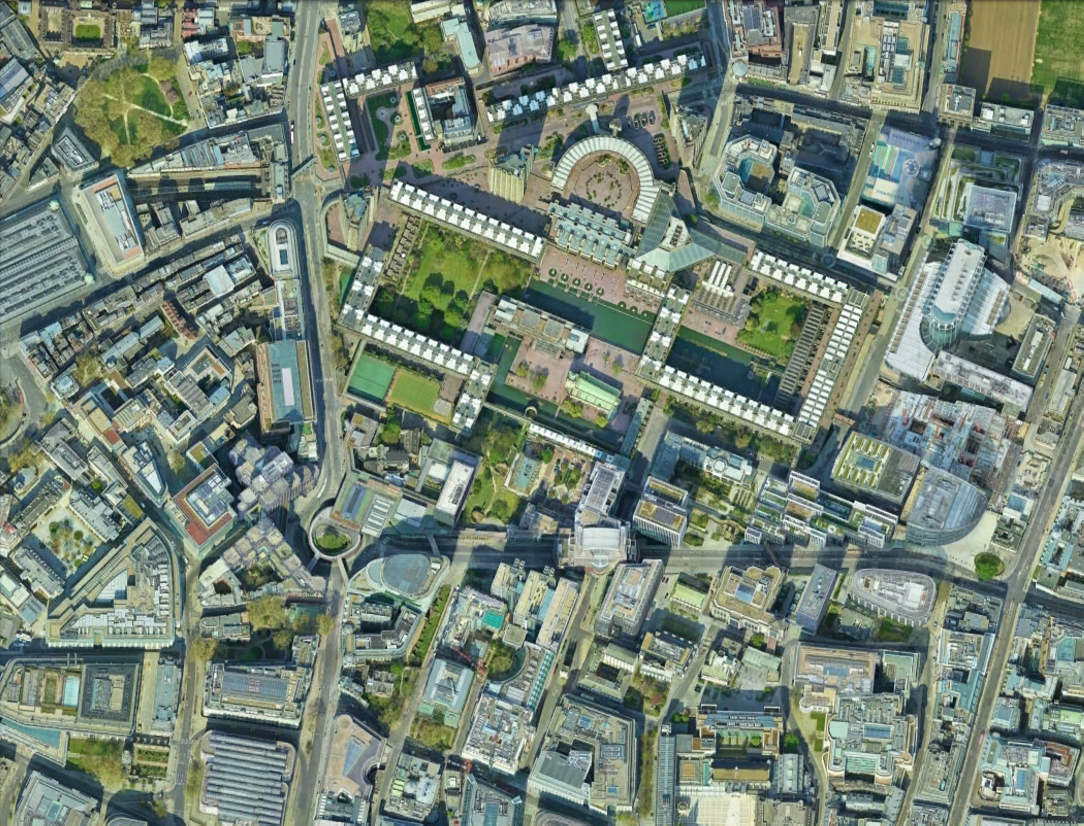
Google Earth 2020